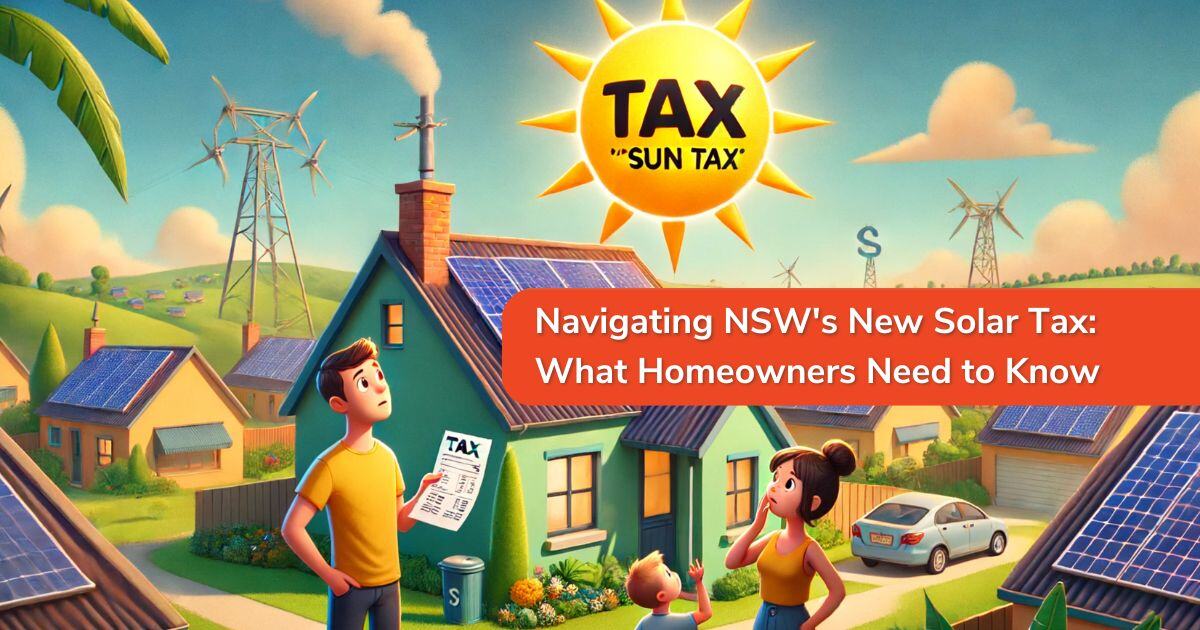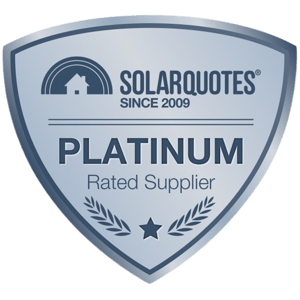Navigating NSW's New Solar Tax: What Homeowners Need to Know

New South Wales solar landscape is set to undergo change with the introduction of a new two-way solar tax. Dubbed the "Sun Tax" by critics, this tax has raised concerns among homeowners and solar energy advocates. In this article, we will delve into the details of the new solar tax, its potential impact on homeowners, and strategies to mitigate its financial effects.
What is the New Solar Tax?
The new solar tax, took effect from 1st July 2024, and it is a levy on the amount of solar energy exported back to the grid by homeowners. This tax aims to address grid stability issues and ensure that solar energy production is fairly integrated into the national energy system. However, it has been met with resistance from many who see it as a deterrent to solar adoption.
Key Details:
- The tax targets excess solar energy sent back to the grid during peak times.
- It was developed to reduce congestion in the electricity network.
- The average solar home is expected to be about $70 worse off annually, though they will still save around $900 on power bills.
According to a report by A Current Affair, about 3.5 million Australian solar panel owners currently receive payments from power companies for every extra kilowatt of electricity they send to the grid. However, this is set to change as the 'Sun Tax' will charge solar panel owners who send their extra electricity back to the grid during peak times, typically during the day. The tax was developed to reduce congestion in the electricity network, which is struggling to handle the influx of power being sent to the grid at times of high demand.
Impact on Homeowners
The introduction of this tax could have several implications for homeowners:
- Increased Costs: Homeowners may see an increase in their energy bills as they are taxed on the energy they export to the grid.
- Reduced ROI: The return on investment (ROI) for solar systems may decrease.
- Adoption Rates: There is a risk that the tax will increases year on year.
Homeowners like Markus, who have invested in solar systems following government recommendations and receiving rebates, feel punished by this new tax. Markus expressed his frustration, stating, "It's ridiculous now that they encouraged us to do solar for 15 years and now they're going to smack us if we want to export it." Markus also highlighted that this tax might force him to give away his excess power to avoid being charged.
Anna Collyer, Chair of the Australian Energy Market Commission, defended the tax, stating that the rapid uptake of solar exceeded expectations and doing nothing was not an option. The grid would get congested, and no more solar would be able to be exported, resulting in a worse position for everyone.
The new tariff system marks a significant shift in how solar energy is managed and monetised. An Ausgrid spokesperson noted that other energy distribution businesses are adopting this pricing framework for similar reasons, as the number of home solar systems is forecast to increase across Australia. This widespread adoption of similar tariffs highlights the importance of finding effective solutions to mitigate the financial impact on solar homeowners.
Strategies to Mitigate Financial Impact
While the new tax presents challenges, there are several strategies homeowners can adopt to mitigate its impact:
- Dynamic (Flexible) Exports: Utilising technologies like SolarEdge’s Dynamic Export can help homeowners manage and control the amount of solar energy they export. This system adjusts the output from the solar inverter based on grid requirements, ensuring compliance and optimising financial returns.
- How It Works: SolarEdge’s Dynamic Export uses energy management technology to monitor and regulate the export of solar power in real-time automatically. It adjusts the output from the solar inverter based on the limits set by the grid or the energy company, ensuring that the export stays within the required limits.
- Benefits: Ensures compliance with grid requirements, maximises financial returns, enhances energy independence, reduces energy waste, and integrates with smart energy management platforms.
- Energy Storage Systems: Investing in battery storage systems can help homeowners store excess solar energy for later use, reducing the amount of energy exported to the grid and thus minimising tax liability. The benefits of solar batteries extend far beyond avoiding Ausgrid’s new policy, including enhancing energy independence, promoting environmental sustainability, supporting grid stability, and future-proofing against policy changes.
- Maximising Self-Consumption: By increasing the amount of solar energy consumed within the home, homeowners can reduce their dependency on the grid and the amount of energy exported. This can be achieved through energy-efficient appliances, smart home technologies, and time-of-use optimisation.
- Smart Energy Management: Integrating smart energy management platforms can help homeowners align their energy production with consumption patterns, making the most of their solar energy and reducing waste. This includes features like Time-of-Use (TOU) optimisation, energy export limitation, and remote system monitoring and management.
- Government Incentives and Rebates: Staying informed about any government incentives or rebates that can offset the cost of solar installations and upgrades is crucial. These incentives can help alleviate the initial financial burden and improve ROI.
SolarEdge Technologies has announced that its products have met the new Dynamic Export requirements as part of the South Australian Government's plan to stabilise the grid with sophisticated, remote cloud control technologies. SolarEdge’s smart inverters achieve this capability without the complexity and additional costs of adding third-party controllers. Zvi Lando, SolarEdge’s CEO, emphasised the company's commitment to helping network operators solve congestion issues and further increase solar adoption.
Conclusion
The new New South Wales two-way solar tax represents a shift in solar energy landscape, with financial impacts for solar homeowners. However, by adopting smart strategies and leveraging advanced technologies, homeowners can navigate these changes and continue to benefit from their solar investments. It is essential to stay informed and proactive to maximise the economic and environmental benefits of solar energy.
%20(1).png?width=265&height=96&name=www.smartenergyanswers.com.auhs-fshubfsSmart%20Energy%20Answers%20Logo%20(HIRES)%20(1).png)

.png?width=514&height=121&name=Tesla%20Powerwall%203%20(new).png)







